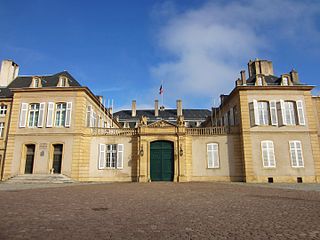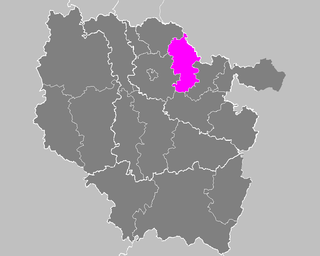
The arrondissement of Boulay-Moselle is a former arrondissement of France in the Moselle department in the Lorraine region. In 2015 it was merged into the new arrondissement of Forbach-Boulay-Moselle. It had three cantons and 96 communes.

The arrondissement of Château-Salins is a former arrondissement of France in the Moselle department in the Lorraine region. In January 2016 it was merged into the new arrondissement of Sarrebourg-Château-Salins. It had 128 communes.

The arrondissement of Forbach is a former arrondissement of France in the Moselle department in the Lorraine region. In 2015 it was merged into the new arrondissement of Forbach-Boulay-Moselle. It had seven cantons and 73 communes.

The arrondissement of Metz-Campagne is a former arrondissement of France in the Moselle department in the Lorraine region. In 2015 it was merged into the new arrondissement of Metz. It had nine cantons and 142 communes.

The arrondissement of Thionville-Est is a former arrondissement of France in the Moselle department in the Lorraine region. In 2015 it was merged into the new arrondissement of Thionville. It had six cantons and 75 communes.
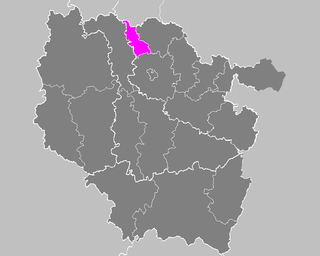
The arrondissement of Thionville-Ouest is a former arrondissement of France in the Moselle department in the Lorraine region. In 2015 it was merged into the new arrondissement of Thionville. It had six cantons and 30 communes.
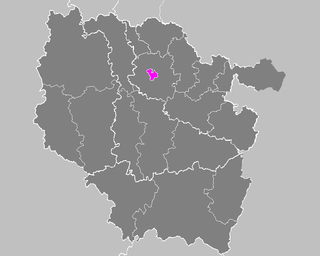
The arrondissement of Metz-Ville is a former arrondissement of France in the Moselle department in the Lorraine region. In 2015 it was merged into the new arrondissement of Metz. It had four cantons and one commune.
The following is a list of the 27 cantons of the Moselle department, in France, following the French canton reorganisation which came into effect in March 2015:
The Canton of Faulquemont is a French administrative division, located in the Moselle département.
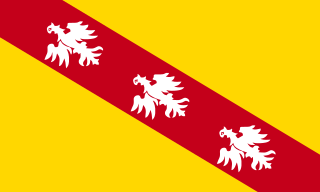
The arrondissement of Forbach-Boulay-Moselle is an arrondissement of France in the Moselle department in the Grand Est region. It was created at the 2015 arrondissements reform by the merger of the former arrondissements of Forbach and Boulay-Moselle. It has 169 communes.

The arrondissement of Metz is an arrondissement of France in the Moselle department in the Grand Est region. It was created at the 2015 arrondissements reform by the merger of the former arrondissements of Metz-Campagne and Metz-Ville. It has 140 communes.
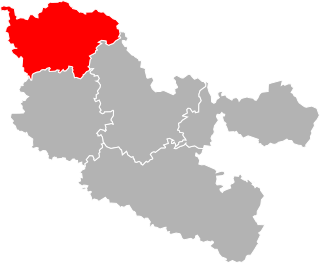
The arrondissement of Thionville is an arrondissement of France in the Moselle department in the Grand Est region. It was created at the 2015 arrondissements reform by the merger of the former arrondissements of Thionville-Est and Thionville-Ouest. It has 105 communes.
The canton of Boulay-Moselle is an administrative division of the Moselle department, northeastern France. Its borders were modified at the French canton reorganisation which came into effect in March 2015. Its seat is in Boulay-Moselle.
The canton of Les Coteaux de Moselle is an administrative division of the Moselle department, northeastern France. It was created at the French canton reorganisation which came into effect in March 2015. Its seat is in Moulins-lès-Metz.
The canton of Montigny-lès-Metz is an administrative division of the Moselle department, northeastern France. Its borders were modified at the French canton reorganisation which came into effect in March 2015. Its seat is in Montigny-lès-Metz.
The canton of Le Pays Messin is an administrative division of the Moselle department, northeastern France. It was created at the French canton reorganisation which came into effect in March 2015. Its seat is in Courcelles-Chaussy.
The canton of Le Sillon Mosellan is an administrative division of the Moselle department, northeastern France. It was created at the French canton reorganisation which came into effect in March 2015. Its seat is in Maizières-lès-Metz.
The canton of Stiring-Wendel is an administrative division of the Moselle department, northeastern France. Its borders were modified at the French canton reorganisation which came into effect in March 2015. Its seat is in Stiring-Wendel.
The canton of Yutz is an administrative division of the Moselle department, northeastern France. Its borders were modified at the French canton reorganisation which came into effect in March 2015. Its seat is in Yutz.
Metz Métropole is the métropole, an intercommunal structure, centred on the city of Metz. It is located in the Moselle department, in the Grand Est region, northeastern France. It was created as a communauté d'agglomération in January 2014, and became a métropole in January 2018. Its population was 225,192 in 2014, of which 119,775 in Metz proper.
